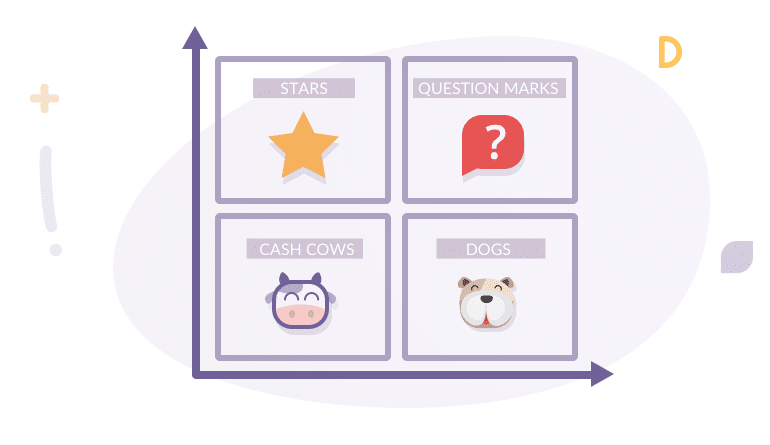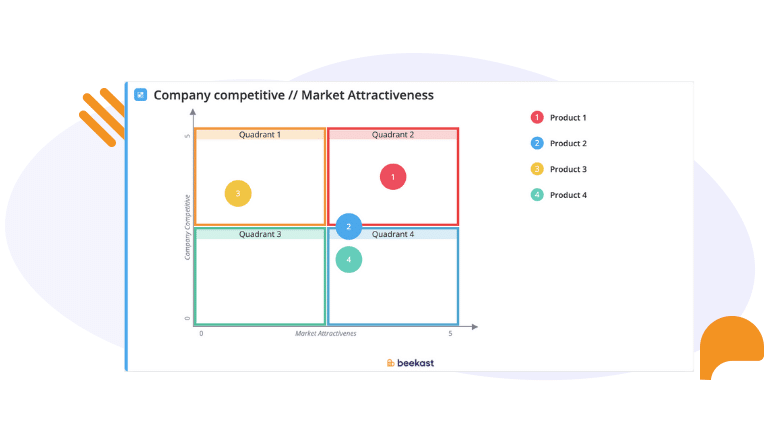Your company is raking in profits today, which is great news! But are you sure this will still be the case a few years down the road? This was the very issue that, in the 1960s, led the renowned strategy consulting firm Boston Consulting Group, founded by Bruce Henderson, to devise the matrix for which it became famous.
What strategic decisions need to be made to ensure an untroubled future?
Why use the BCG matrix?
Companies are born, grow, decline and then disappear…Predicting and anticipating this descent is a strategic issue, now more than ever!
According to a recent study by the McKinsey firm, the average life span of a company in the United States listed on the S&P 500 was 61 years back in 1958. But nowadays, the average has fallen to under 18 years!
Why this huge drop? The No.1 cause is the digitisation of the economy. Companies are disappearing, replaced with new offers conveying digital value. The examples are manifold: numerous shops have disappeared and been replaced by e-commerce businesses; with the age of digital music came many ensuing bankruptcies, with the sector shrinking by 2/3!
And what about you? Do you think the best of what you offer today will still be profitable three years from now?
Set up a BCG matrix, and position your product portfolio on it. This will help you direct future activities and take the right decisions to keep your business making profits for years to come.
How do you use the BCG matrix?
The BCG matrix looks at 2 aspects:
- The relative market share → The company’s competitiveness
- Market growth rate → the attractiveness of the market
To implement it effectively, it’s now recommended that these two aspects be generalised by renaming them into ‘Company Competitiveness’ and ‘Market Attractiveness’ respectively.
In this matrix, position various product/market pairs offered by your company (one product or service for a given market). This means a single product may produce 2 product/market pairs if it exists on 2 separate markets.
Large companies can also use the BCG at the strategic level. In this case, add your Strategic Sectors. These strategic sectors are your company’s main fields of activity. For example, a group like Dassault operates in at least 3 strategic sectors: military aviation (the Rafale), civil aviation (the Falcon) and the enterprise software industry through its subsidiary Dassault Systèmes.
A BCG matrix represents a situation at a given time: today or three years from now, for instance. Analyse them both and then compare them to make good decisions about your activities:
- What should you grow and invest in to keep your competitive edge: Stars
- What needs to be decided on: either to develop (tomorrow’s stars) or abandon: Question marks
- What to abandon or sell: Dogs
- What generates the cash needed for other investments: Cash cows

Why run a participative BCG matrix?
Even within your company, not everyone has the same point of view concerning your future activities. Marketing, sales, production … do they share the same vision?
A BCG Matrix workshop is the opportunity to share and compare the different perspectives and make the right decisions as a group.
Does your company have multiple locations (cities, regions, countries, etc.)? The context of local markets can make it difficult to see the big picture! So, host a participative BCG Matrix workshop, getting representatives from each of your markets involved, and highlight the overall potential of your activities.
How do I host a BCG matrix workshop in Beekast?
- Create your Beekast account, followed by your session
- Add the Matrix activity and choose the quadrant format.
- Rename the 2 axes: “Company Competitiveness” for the X-axis, and “Market Attractiveness” for the Y-axis.
- Remember to reverse the 2 extreme values on the X-axis: the 5 should be at the left and the 0 at the right. So, a competitive activity for the company will be positioned at the left!
- Rename the 4 quadrants (from left to right and top to bottom): Stars, Question Marks, Cash Cows, Dogs
- Finally, create as many proposals to evaluate as you have activities to position in the matrix.

Your BCG Matrix is ready to roll! Now all you have to do is get everyone needed for the workshop together and get started!
The future is yours to secure.
